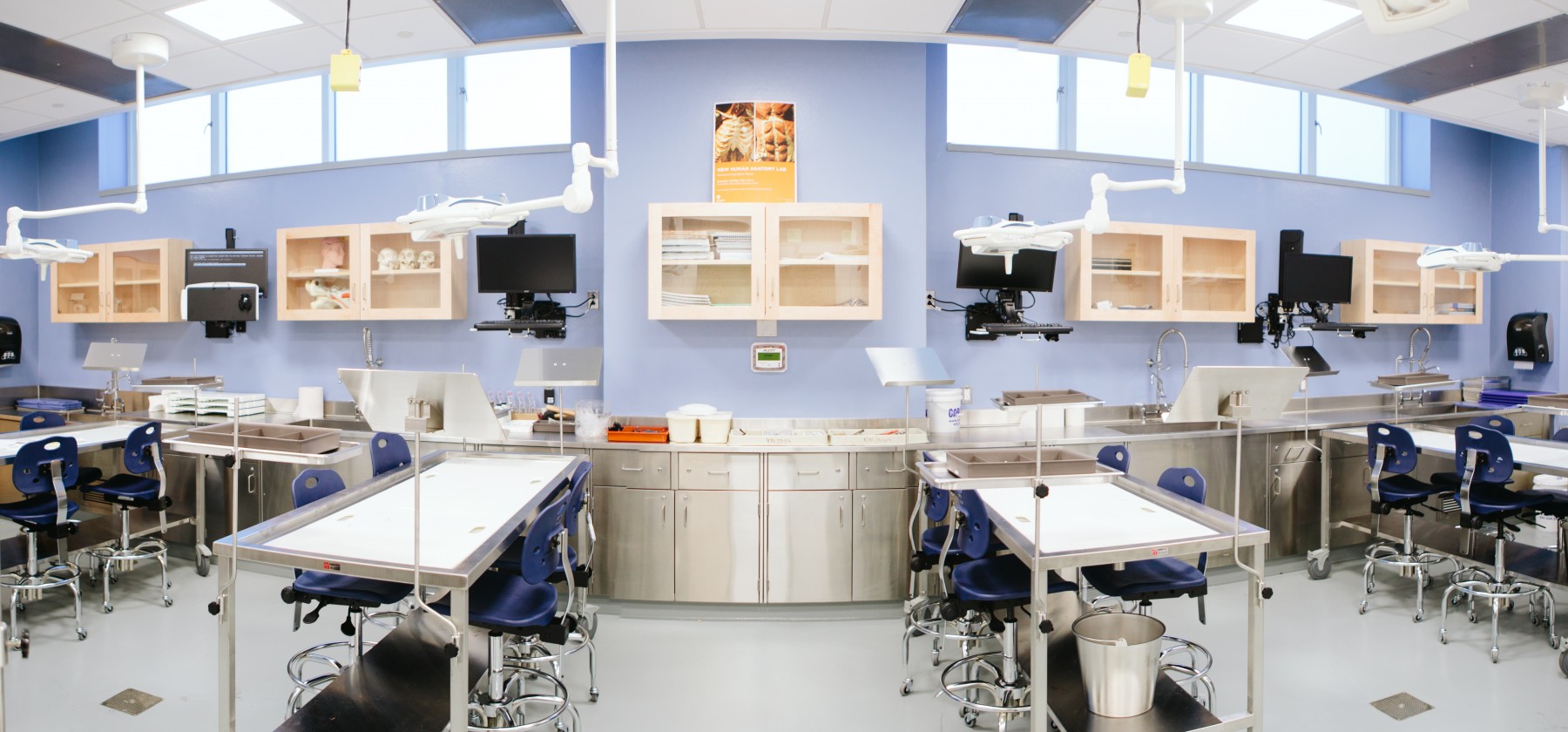New Science Lab Wing for Undergraduate Research at Gordon
Students have once again descended on the Gordon classrooms—fresh from their month-long Christmas break, and ready to dive into their spring semester courses. In the Ken Olsen Science Center, a group of science students will delve a level deeper (quite literally) in the new underground lab wing.
Funded by a grant from the Massachusetts Life Sciences Center as part of the Life Sciences Consortium of the North Shore, the new space features a “Fab Lab” (fabrication lab, or machine shop) for physics students, a vivarium and aquarium for biology and psychology students conducting animal research, and a cadaver lab for kinesiology and pre-health professions students.
Gordon is one of only a handful of Christian liberal arts colleges to offer a cadaver lab for undergraduate scientific study. “We have an opportunity to bring students into the experience from a Christian background,” explains Dr. Sean Clark, professor of kinesiology. “This opens up discussions about the spiritual significance of the human body. We are flesh and blood, but we are so much more than flesh and blood.”
The vision for the cadaver lab was cast a few years ago, when Dr. Clark asked students in his senior seminar class to begin dreaming about what an anatomy lab at Gordon might look like. Enrollment in the Kinesiology Department had doubled over the previous decade, and Dr. Clark knew they would need a solution as they outgrew the lab space they previously shared with the Biology Department. At that point, his students weren’t necessarily designing with cadavers in mind, but they created something versatile enough to accommodate that option in the future.
After the initial design by Gordon students and a little help from architects and specialists, the lab plans were then refined and finalized by Dr. Clark—even down to the paint color (he opted for a soft blue—Leisure Blue, to be exact). The traditional sterile white walls and stainless steel fixtures felt too stark and uninviting for students who would be encountering cadavers for the first time. “We wanted to make sure they felt this was an accessible undertaking, not overwhelming,” he explains.
Gordon’s state-of-the-art cadaver lab features:
- A “smart ventilation” system so students breathe fresh air from above, not anything rising from the ground.
- A teaching station equipped with a 70” interactive LCD display and cameras that are wirelessly connected to computers at each of the four learning stations, allowing students get an in-depth view of their professor’s work without having to leave their stations. The cameras also offer lecture capture for documenting lab techniques and instructions.
- Retractable extension cords that drop from the ceiling to reduce obstacles in the room.
- Overhead surgical lights at each working station as well as movable surgical lights with magnification on floor stands.
- An electro-mechanical scissor lift to assist with moving the cadavers.
With a capacity for five cadavers and an ideal location near the medical hub of Boston, “we are really looking to leverage our location to provide extra opportunities for students now that we have this incredible space,” Dr. Clark says. And because his students tend to be highly motivated, with sights set on competitive graduate programs, this new resource is particularly important: “We have an opportunity to provide hands-on experience, and instill a humble confidence in students as they enter grad programs.”
Students will begin working with cadavers this spring in two advanced anatomy classes: “Thoracic and Abdominopelvic Cavities” and “Neck, Back and Nervous System.”
The cadavers are supplied through a donor program, with which Gordon has been building a relationship over the last three years. “We approach this endeavor recognizing and humbly appreciating the gift for learning that each donor has provided. The giving of one’s body for study is truly an exceptional gift and one that we need to appropriately recognize and steward well,” says Dr. Clark.
Though the new lab was just recently completed, it saw significant activity this past semester during the final construction stages. Students conducted smaller scale projects throughout the fall—such as cat and pig dissections, and the focused study of individual human organs. During Homecoming and Family Weekend, the Kinesiology Department hosted an open house, which was attended by more than 100 students, alumni, parents and visitors.
Up next in the lineup of Ken Olsen Science Center additions: a new biology greenhouse space on the third floor.
 The Bell
The Bell